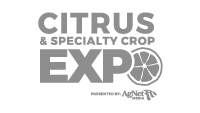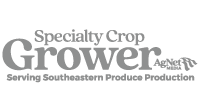Citrific Nursery president Mathew Konrad recently gave a citrus nursery tour to show a culture process and automated nursery system that could be beneficial to the citrus industry. “I got into this industry because I felt like the industry was lacking a lot of common technologies and more sophisticated nursery operations,” said Konrad. He explained that he wanted to make …
From Planning to Planting: Establishing New Groves in the Presence of HLB
By Ute Albrecht Despite the constant threat of huanglongbing (HLB), most growers remain optimistic and are replanting citrus trees to maintain production levels necessary for sustaining the industry. The tax incentive bill under the Emergency Citrus Disease Response Act introduced in December 2015, if implemented, will help growers get back expenses associated with replanting of diseased trees immediately, instead of …
Citrus Grower: Tree Replant Incentives Are Beneficial
State and federal programs giving citrus growers incentives to replant and a state program designed to eliminate abandoned groves were discussed at a November 1 workshop in Lakeland. The program was hosted by Florida Citrus Mutual. Grower James “Hoss” Morgan, procurement director for Wm. G. Roe & Sons, Inc., likes the programs. “All three of these are very beneficial if …
Grower Gets Strong Orange Production
Bobby Mixon of Sunny South Packing Company, one of several sharing experiences at a recent grower forum in Arcadia, reported good production from a Vernia orange block. He said the block yielded 450 to 500 boxes to the acre last season, which is far above average orange yield in the HLB era. Mixon says Vernia provides “alternate production” from year …
UF/IFAS Imaging System Can Detect Citrus Greening Before Symptoms Show
By: Brad Buck GAINESVILLE, Fla. — A time-lapse polarized imaging system may help citrus growers detect citrus greening before the plant’s leaves show symptoms, which should help growers as they try to fend off the deadly disease, a new University of Florida Institute of Food and Agricultural Sciences study shows. For the new study, Won Suk “Daniel” Lee and Alireza …
New Methods for Managing Citrus Nutrition
University of Florida horticulturist Arnold Schumann recently discussed new ways growers might better manage citrus nutrition. During the Citrus Nutrition Day at the Citrus Research and Education Center, he spoke about the potential future use of a Diagnosis and Recommendation Integrated System (DRIS) that he’s working on. He also addressed the benefits and results of hydroponics in citrus nutrition management. …
UF/IFAS FAWN System Helps Growers Save Water and Money
Citrus grower James Shinn remembers days when he and his workers would rush out as early as 5 p.m. to turn water pumps on to irrigate his crops. “We had no idea when the temperature would drop, so we had to get out there early and get the water going.” Now, researchers with the University of Florida Institute of Food …
The Many Hats of Allen Morris
By Tacy Callies Having grown up in the small north Florida town of Macclenny, a farming community, Allen Morris was introduced to agriculture at an early age. His father died in a tractor accident when Morris was seven, but that didn’t deter him from wanting to earn a living in agriculture. In fact, at 14, he obtained a restricted driver’s …
Citrus Replanting Incentives in Face of HLB
More than 50 attended a November 1 workshop in Lakeland to learn about incentives to induce citrus tree replanting. Replanting is needed to replace trees lost to HLB and other problems. Kayla Nickerson of the Florida Department of Agriculture and Consumer Services (FDACS) talks about a relatively new incentive – her agency’s Citrus Grove Renovation/Re-establishment Support Program. Nickerson says, “We’re …
Managing the Health and Productivity of HLB-Affected Groves
By Tripti Vashisth In 2005, huanglongbing (HLB or citrus greening disease) was first discovered in Florida. Florida orange production changed from 242 million boxes in the pre-hurricane, pre-HLB, 2003–2004 season to 81.5 million boxes in 2015–2016. This dramatic reduction in yield is attributable to multiple causes, including a reduction in citrus acreage, citrus canker and other citrus diseases. HLB is …
Slow Start for Fresh Florida Grapefruit Season
Fresh Florida grapefruit shipments continue to decline in concert with the downturn in production resulting from HLB and other problems. On October 26, the Florida Department of Citrus projected fresh Florida grapefruit shipments will be about 4.13 million boxes this season. Three seasons ago, in 2013-14, fresh Florida grapefruit shipments totaled 6.1 million boxes and have dropped in each season …
Some Growers ‘Being Squeezed More than Others’ by HLB
Citrus Extension agent Steve Futch answers questions following a grower forum in Arcadia on October 27. Growers discussed production, bactericides for HLB and much more. The forum opened with one grower saying he doesn’t know how much longer he can keep going. Another reported per-acre orange production of 450 to 500 boxes in some blocks – a superb level in …
Smelling Huanglongbing for Early-Detection
Another early-detection method being developed works by smelling huanglongbing infections in trees. This method detects the different scents plants give off. Researchers at the University of California, Davis have created a test that could lead to advances in fighting huanglongbing (HLB) disease in citrus. Researcher and professor of mechanical and aerospace engineering, Christina Davis, said the test looks for a …
Control of Stem-End Rot of Fresh Citrus
By Mark A. Ritenour, Jiuxu Zhang and Megan M. Dewdney Decay of fresh citrus fruit is most often caused by fungal pathogens that grow and develop in the hot and wet conditions typical in Florida. While green and blue molds (Penicillium digitatum and Penicillium italicum) and sour rot (Galactomyces citri-aurantii) are the most common postharvest citrus diseases worldwide, the subtropical …
Growers to Pay Department of Citrus Historically Low Tax Rate
Citrus grower taxes supporting Florida Department of Citrus (FDOC) programs this season will be 7 cents per box for processed oranges and fresh grapefruit – the two most utilized fruits. Those historically low rates were proposed early in 2016 by 12 large Florida citrus growers and adopted by the Florida Citrus Commission (FCC) on October 26. Other per-box grower assessments …
Sneak Peek: November 2016 Citrus Industry Magazine
The November issue of Citrus Industry magazine will be available to readers soon. It features the U.S. Department of Agriculture’s initial citrus crop forecast for the 2016–17 season. The article includes coverage of the grower gathering at the Dark Hammock Legacy Ranch and industry reactions to the 70 million orange boxes figure. Two features in this issue focus on citrus …
Grower Urges Participation in UF Nutrition Trials
Central Florida citrus grower Vic Story tells why he’s participating in grower nutrition trials being conducted by University of Florida researcher Tripti Vashisth, and urges other growers to participate. “We need to look at some of the varying programs that the university has proposed in practical, out-in-the-grove situations over a period of time,” Story says. “I’m measuring these programs against …
Analyzing Volatile Organic Compounds to Detect HLB
Another early detection and screening process for HLB has been developed at the University of California, Davis. Cristina Davis, professor of mechanical and aerospace engineering, is using volatile organic compounds (VOCs) as indicators of disease in trees. VOCs are odors that are emitted by all living things. These odors can be very meaningful, because they are distinctively different between a …
Monitoring Plant Metabolism to Detect HLB
HLB pre-screening through analyzing plant metabolism holds potential to be a relatively inexpensive option for growers. Caroline Slupsky, professor in the Department of Nutrition and Food Science and the Department of Technology at the University of California, Davis, is looking at the metabolism of citrus trees and analyzing changes as indicators of stress and disease. Plants’ metabolic pathways change in …
Controlling HLB with Thermotherapy: What Have We Learned So Far?
By Reza Ehsani, Megan Dewdney and Evan Johnson In the last two years, many growers looked at thermotherapy as a way of keeping HLB-affected citrus trees in production until a more permanent solution could be developed. It has been shown that thermotherapy can kill HLB-causing bacteria under controlled environments. But the exact time and temperature is not known, and it …





























